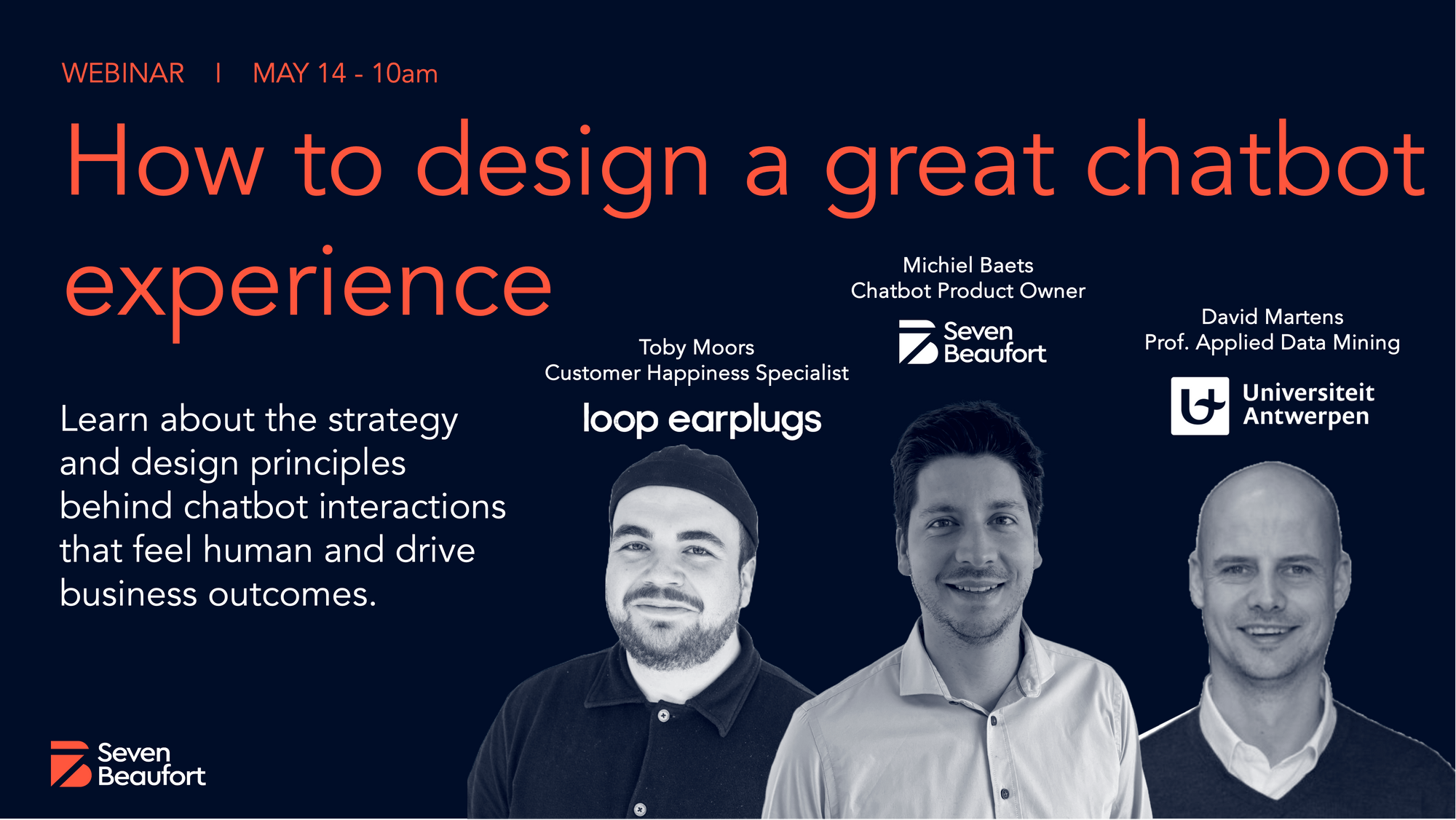From Brussels Airport’s BRUce to Loop Earplugs’ Aura, conversational AI is evolving fast. In this expert webcast, Michiel Baets (Partner at Seven Beaufort and Product Owner of BRUce) sits down with Toby Moors (Customer Happiness Specialist at Loop Earplugs) to unpack what makes a chatbot not just efficient but exceptional.
Together, they dive into the nitty-gritty of scaling AI for customer service, staying on-brand, and creating experiences that stick. Whether you're leading digital channels, managing customer experience, or building the next-gen support platform - this one’s for you.
1. Your Chatbot is a Product - Treat it like one
“We didn’t onboard AI to replace humans. We did it to enhance the team.” - Toby Moors
Loop’s chatbot, Aura, wasn’t built overnight. It evolved from a simple helper to a full-blown virtual agent, handling everything from pre-sales to returns. The key? Thinking of the chatbot like a product - one that needs user feedback, continuous iteration, and clear KPIs (like CSAT and automation rate).
Why it matters: Teams designing AI tools must prioritize quality over automation alone. It’s not just about deflection; it’s about delivering value.
2. Brand voice is non-negotiable - even for bots
“If you ask Aura how to make a pizza, she’ll loop it back to earplugs in a fun way.”
Aura isn’t just smart - it sounds like Loop. With input from brand and copy teams, the team designed a chatbot personality that’s efficient, playful, and human. Customers now address Aura by name, even joking with her.
Why it matters: For brands competing on experience, your chatbot is part of your identity. When tone, style, and persona align, customers feel it - and trust it.
3. Localization isn’t optional - it’s expected
"In Japan, people expect ultra-fast, formal service. We’re building a separate persona just for that market.”
One-size-fits-all doesn’t cut it anymore. Loop tailors its return flows and tone of voice per market, using email identifiers to route customers through the right experience. In Japan, where service expectations are sky-high, this customization is critical.
Why it matters: Teams operating globally need to adapt chatbots to cultural and logistical contexts—or risk frustrating customers with mismatched expectations.
4. The knowledge base is your secret weapon
“Everything starts with a clean, structured knowledge base.”
Loop’s chatbot is only as good as the content it draws from. By cleaning up their FAQs, internal documents, and campaign info, the team created a strong foundation for Aura to give accurate, branded answers - and avoid AI hallucinations.
Why it matters: If your bot is spitting out wrong or outdated info, it’s likely a knowledge problem, not a tech one. A central, up-to-date knowledge base helps avoid misfires and builds trust.
5. Design for Feedback Loops, not just Flows
“We train our BPO team to spot breakdowns in conversations and coach Aura daily.”
Every failed chatbot interaction is a goldmine. Instead of brushing them aside, Loop analyses failed handovers to identify gaps in knowledge, process, or tone. The chatbot improves with each feedback cycle.
Why it matters: Feedback loops turn chatbot data into strategic insight. Build processes (and team ownership) around learning from what didn’t work.
6. Proactive transparency builds trust
“Just saying, ‘If something happens, you’ll be the first to know,’ already reassures people.”
Both BRUce and Aura are moving beyond reactive support. Whether it’s flight delays or return issues, proactive updates, even incomplete ones, go a long way in managing expectations and maintaining trust.
Why it matters: Good CX isn’t always about fixing things: it’s about anticipating what might go wrong and communicating early.
6. Final Thought: It’s time to Rehumanize AI
As chatbot experiences mature, it’s clear: what customers want isn’t just fast support, it’s good support. They want to feel understood. Aura may be virtual, but when she’s helpful, on-brand, and personable, she doesn’t just solve problems. She builds loyalty.
![[object Object]](https://umsousercontent.com/lib_SgVrTchGksgQdBiV/5to2tmehoshuavn2.png?w=306)


